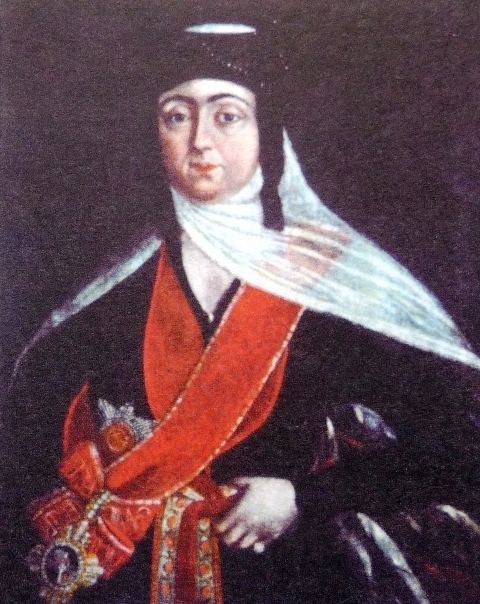Name Mariam Tsitsishvili | ||
 | ||
Tenure 11 January 1798 – 28 December 1800 Parents Prince Giorgi Tsitsishvili Similar People George XII of Georgia, Heraclius II of Georgia, Irakli Gruzinsky, George IV of Georgia | ||
Mariam Tsitsishvili’s Slow Motion Video
Mariam (Georgian: მარიამ ციციშვილი), also known as Maria in European sources, (9 April 1768 – 30 March 1850) was the Queen of Georgia as the second wife and consort of the last King George XII of Georgia (reigned from 1798 to 1800).
Contents
Family and early life
Princess Mariam Tsitsishvili was born at Tbilisi to Prince Giorgi Tsitsishvili, a representative of one of the preeminent noble houses of Georgia. George XII, then Heir Apparent to the Georgian throne, married her on 13 July 1783 after the death of his first wife, Princess Ketevan Andronikashvili (1754–1782). Mariam gave birth to eight sons and three daughters:
Later life
When George died on December 18, 1800, Paul I of Russia, an official protector of the Kingdom of Georgia, did not allow his heir, David, to be crowned king, and abolished the Georgian monarchy, annexing the kingdom to the Russian Empire.
In 1802, the newly established Russian administration started deporting the members of Georgian royal family to Russia proper. In April 1803, the Russian commander in Georgia, Prince Pavel Tsitsianov, himself a Russified Georgian and ironically a distant relative of the Georgian queen, heard that Mariam was planning to flee to the strongholds of Khevsureti with the aid of loyal mountainous clansmen who were resolutely opposed to the Russian rule.
Tsitsianov gave orders to Major-General Ivan Petrovich Lazarev that the queen and her children should be immediately removed from Georgia under guard. The very next morning, on April 22, 1803, the Russian soldiers arrived at Queen’s mansion and Lazarev ordered Mariam to get up and be ready for departure, but the queen refused to follow him. The general then took hold of her foot, to make her rise from the cushion on which she was sitting, surrounded by her sleeping children. Mariam, indignant at the attempt to take her by force, drew the dagger from beneath the cushion and stabbed Lazarev, killing him on the spot. Lazarev’s interpreter drew his saber, and gave her a wound in the head, so that she fell down insensible. The soldiers burst into the bedroom and arrested the queen and her children. (?)
Escorted by a considerable armed force, they were carried away to Russia through the Darial Pass. During her passage through Georgia, the inhabitants came out to testify their loyalty to the queen and bade her farewell. She was kept into confinement at the Belogorodsky Convent at Voronezh until 1811 and then permitted to reside in Moscow. Little is known about Mariam’s life in Moscow, but she is known to have been regularly visited by Georgian students whom she helped financially. She died there at 82 and was interred at Svetitskhoveli Cathedral in Mtskheta, Georgia, with regal honors.
The tragic story of Queen Mariam was described in several contemporary accounts, based on the reports of eye-witnesses, and found its place in European literature of that time.
